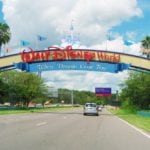 Mysteries
Mysteries  Mysteries
Mysteries  History
History 10 Surprising Stories About the Texas Rangers
 Humans
Humans 10 Philosophers Who Were Driven Mad by Their Own Theories
 Miscellaneous
Miscellaneous 10 Video-Game-Worthy Weapons and Armors from History
 Weird Stuff
Weird Stuff 10 Psychics Who Accurately Predicted Wartime Events
 The Arts
The Arts 10 Pieces of Art Inspired by a Broken Heart
 Health
Health 10 Science Fiction-Sounding New Medical Treatments
 History
History 10 Surprising Facts About the Father of Submarine Warfare
 Space
Space Ten Astonishing New Insights into Alien Worlds
 Weird Stuff
Weird Stuff 10 Bizarre Summer Solstice Rituals Still Practiced Today
 Mysteries
Mysteries Top 10 Haunting Facts About the Ghost Ship MV Alta
 History
History 10 Surprising Stories About the Texas Rangers
 Humans
Humans 10 Philosophers Who Were Driven Mad by Their Own Theories
Who's Behind Listverse?

Jamie Frater
Head Editor
Jamie founded Listverse due to an insatiable desire to share fascinating, obscure, and bizarre facts. He has been a guest speaker on numerous national radio and television stations and is a five time published author.
More About Us Miscellaneous
Miscellaneous 10 Video-Game-Worthy Weapons and Armors from History
 Weird Stuff
Weird Stuff 10 Psychics Who Accurately Predicted Wartime Events
 The Arts
The Arts 10 Pieces of Art Inspired by a Broken Heart
 Health
Health 10 Science Fiction-Sounding New Medical Treatments
 History
History 10 Surprising Facts About the Father of Submarine Warfare
 Space
Space Ten Astonishing New Insights into Alien Worlds
 Weird Stuff
Weird Stuff 10 Bizarre Summer Solstice Rituals Still Practiced Today
10 Eerie Abandoned Animal Parks
Animal parks and zoos are supposed to be a source of happiness and entertainment. Ideally, they’re places for people to be educated and enriched, witnessing animal species they normally would not encounter. It doesn’t always work out that way, however.
Lack of funding, opposition by activists, and severity of elements are all reasons that animal parks have closed. The once-thriving locales are left empty, their structures and cages abandoned and overgrown.
10 Warner Brothers Jungle Habitat
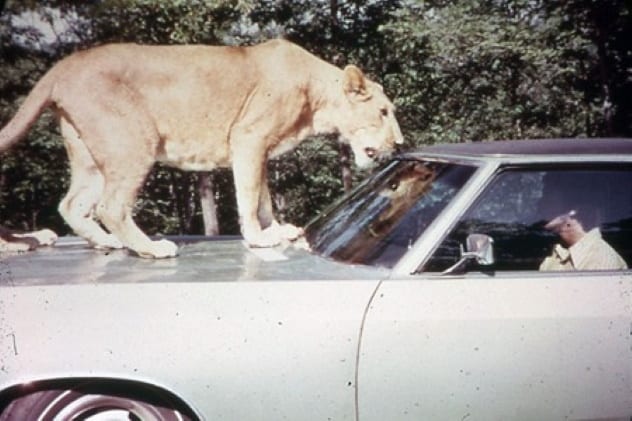
One would think an animal park run by Warner Brothers would be an instant success, but animal attacks, escapes, and opposition from locals would eventually lead to the park being shut down within four years of it opening.
Designed in two parts, the Warner Bros. Jungle Habitat contained a zoo which families could walk through, including a petting zoo, reptile house, camel rides, and snack area, as well as a safari area they could drive through. The safari area featured free-roaming elephants, llamas, lions, and tigers, giving guests an up close and personal view of the animals as they frequently stopped next to the cars and sometimes even climbed on top of them.
Shortly after the park opened in 1972, an Isreali tourist was attacked by two lions after he stuck his hand out of the car window and taunted them while driving through the safari attraction of the park. Two wolves escaped their enclosure and wandered into the local town of West Milford, New Jersey. A local television host was scratched by a six-month-old tiger cub while filming a television special. Then, a couple of years later, a woman was bitten by a baby elephant. Finally, a rhino mounted a gray Mercedes-Benz, believing it to be a mate, causing great damage to the car’s rear end.[1]
Jungle Habitat did not have any rides, and when Warner Brothers tried to expand the park to include a wooden roller coaster, a carousel, and various other rides for adults and kids, they were met with opposition from locals, who did not care for the noise and traffic, and narrowly missed the vote for the expansion. Warner Brothers decided to shut the park down when they were denied the expansion, realizing that without a way to expand, they would not be able to build revenue.
The year after the park closed, all but 400 of the original 1,500 animals in the park had been sold. Unfortunately, nine of the animals contracted tuberculosis and had to be euthanized, leading an investigation into why 19 other dead animals on the property were not buried or disposed of.
The park grounds are now a popular place for people to hike and bike through, with many of the old cages and structures still standing.
9 Catskill Game Farm
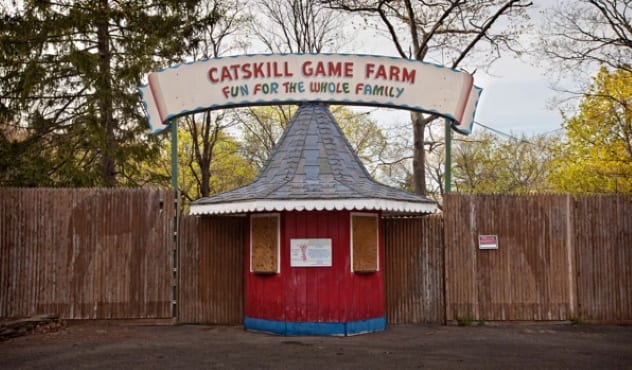
Though it opened after World War II as a fun zoo for families to connect with wildlife by petting and feeding the animals, the Catskill Game Farm would quickly get a dark reputation.
Started in 1933 as a private animal farm and first opened to the public in 1945 in Catskill, New York, the Catskill Game Farm was the first privately owned zoo in the United States and was the biggest zoo for some time. It consisted of deer, bison, yaks, llamas, camels, zebras, and antelopes, with an area guests could walk through and hand-feed the animals.
The zoo was a great success when it opened, as the Catskill Mountains were a popular tourist destination, and the zoo’s founder, Roland Lindemann, spent much of his time expanding the zoo to include rare and endangered animals, growing its population to 600 wild animals and 200 tame animal species.
But in the early 1990s, the zoo would receive bad publicity when a news article reported that animals there were being sold to game hunters for “canned hunts,” when an animal is put into an enclosed area, giving the hunter a sure chance of killing it. Inspection records from the Texas Animal Health Commission stated that over 150 animals were shipped to Texas, and no one knows what happened to them after they entered the state. Before the park closed in 2006, protestors swarmed the gates of the zoo to try to get the owners to donate the animals to sanctuaries. When it came time to auction off the animals after the park’s closure, activists tried to buy as many animals as possible, but many still went to the highest-bidding game hunter.[2]
In 2012, the property was purchased by Ben and Cathy Ballone, with hope to restore the grounds and turn the buildings into an inn and campsite. Recently, they opened the Long Neck Inn in the renovated remains of the old giraffe enclosure, giving the abandoned park a new life and a, hopefully, brighter future.
8 Alligatorland
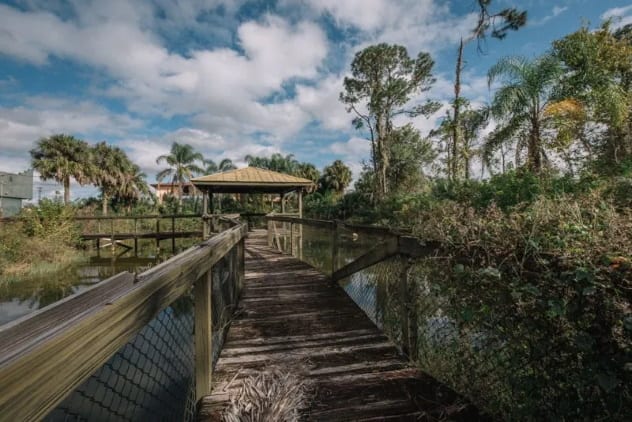
One would think that in the land of Disney World and Universal Studios, attraction parks in Florida would be of the highest standard, but such was not the case for the Alligatorland Safari Zoo.
Sitting just behind the Gator Motel and a 38-meter-long (126 ft) alligator statue, Alligatorland was home to over 1,600 exotic animals and birds of various species. Guests could walk through the nearly 7 acres of land and view the animals up close.
But the trouble for Alligatorland started in 1982, when Gatorland filed a suit against them for having a very similar entryway to their park. The giant alligator jaws were too similar, Gatorland claimed, to their entry, which had been erected since the 1960s. (Alligatorland opened in the 1970s.)
Then, the whole state of Florida came under scrutiny for the way animals were treated. This led to Alligatorland getting a surprise inspection, during which it was found that enclosures were not up to standards, cages had an abundance of old animal feces, and animals were not being cared for properly. The United States Department of Agriculture (USDA) issued Darren Browning, the owner of Alligatorland, a $1,500 fine, which he refused to pay and instead decided to represent himself in court.[3] During the two-day trial, he questioned the competency of the USDA inspectors and ultimately lost his case. For the next three years, he would continue to lose more court battles against the USDA, and he would eventually sell the property in 1995.
The zoo would reopen shortly afterward under the name of Jungleland Zoo, but after flooding, an escaped lioness, more failed USDA inspections, and the economic turn of the early 2000s, the zoo closed its doors in 2002.
The alligator statue in front of Alligatorland was destroyed in 2014, but the structures and walkways of the park still stand, with hopes to one day be renovated and turned back into an animal attraction.
7 Stanley Park Zoo
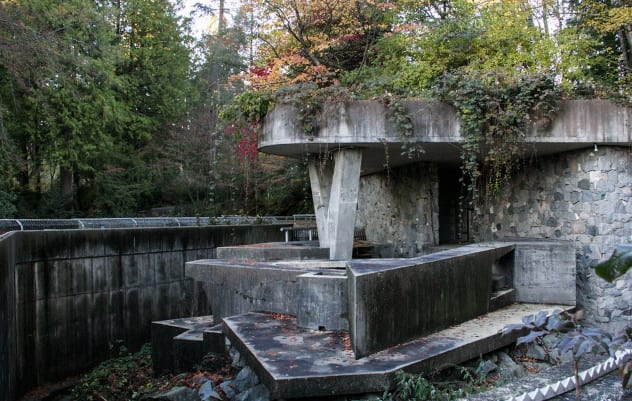
How the Stanley Park Zoo in Vancouver, British Columbia, Canada, was founded is quite an interesting story: The superintendent for Stanley Park, Henry Avison, discovered an orphaned black bear cub on the grounds, so he chained the bear, like a dog, to a stump to keep him contained and safe.[4] Over the coming years, he captured more animals on the grounds that needed help and treatment. By the time the zoo officially opened in the early 1900s, there were over 50 animals, both native and exotic, that Avison had taken in or discovered abandoned, and people kept donating animals to the zoo’s collection, even after Avison’s death.
In 1956, the zoo’s aquarium opened with penguins and otters, and in 1962, polar bears were donated to the zoo and quickly became the main attraction.
In the 1990s, animal activists picketed against the zoo, stating that many of the cages were too small and that Vancouver’s weather was too harsh for many of the animals. To resolve this, the City of Vancouver decided to expand the zoo, but citizens voted against the expansion and called for the zoo to be shut down, so it did in 1996.
Most of the animals were sent to the Greater Vancouver Zoo or relocated to the Stanley Park Children’s Farmyard (which was closed in 2011), but one animal was allowed to stay in the park—Tuk, the 36-year-old polar bear whose health was too poor to be moved. He died in 1997, and the zoo was officially closed.
To this day, the polar bear pit still stands on the grounds and is currently repurposed as a salmon hatchery. Guests can still walk through the overgrown vegetation of where the zoo once was.
6 Belle Isle Zoo
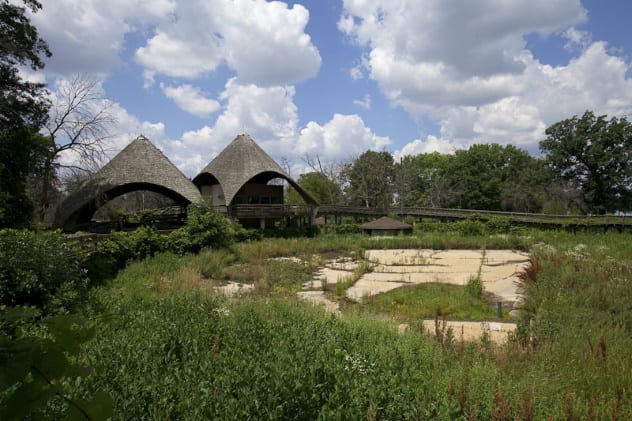
Though Detroit is in the midst of a citywide rehabilitation, there are still many remnants of the years of government corruption and economic depression the city has witnessed.
One such victim to the city’s troubles was the Belle Isle Zoo, closed in 2002 by then-mayor Kwame Kilpatrick, who cited declining attendance and budget constraints as his reasons for closing the zoo, though locals overwhelmingly objected to the closure.
Belle Isle, located in the Detroit River between Detroit and Canada, was once a prominent attraction for locals and tourists, drawing them to the park’s beaches, nature paths, and stunning views, as well as its main attraction, the zoo.
Opened in 1895 with just a bear den and a deer pack, the zoo would grow to over 150 animals in just 15 years and would include tigers, seals, elephants, and exotic birds. When the Detroit Zoo opened, most of the animals were rehomed there, and the Belle Isle Zoo was turned into a children’s zoo before getting a full renovation in the 1980s and being renamed “Safariland.”
The renovation to the park would include the various hut-like structures, wooden paths and bridges, and metal cages that currently stand abandoned on the island, overgrown and graffitied, with fallen trees blocking the paths and vines growing around the metal. Currently, there are no plans to reopen the zoo,[5] though the state is working on restoring other areas of Belle Isle.
5 Groote Schuur Zoo
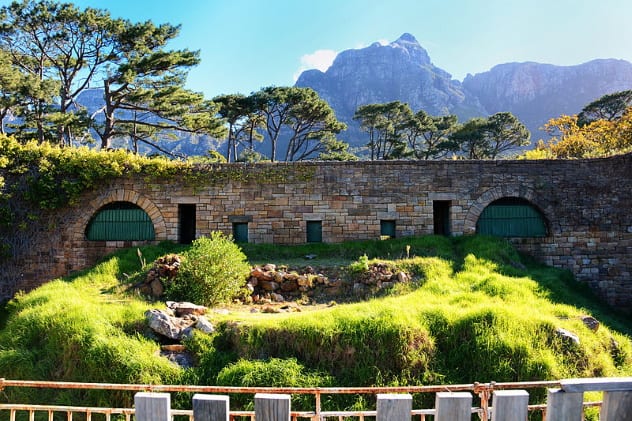
Imagine being given a couple of lions and leopards. What would you do with them? If you were Cecil John Rhodes, you would create a zoo to house them.
In 1897, Rhodes created a private menagerie in Cape Town, South Africa, for his large cats, as well as other animals he received as gifts throughout the years. After his death, the state would inherit Rhodes’s estate and his collection of animals. New enclosures were built, and the site was called the Groote Schuur Zoo. Lions, emus, mountain goats, crocodiles, and other animals were kept in enclosures, and the zoo became a popular attraction.
The lions would always be the focus of the zoo, however, having the prominent spot and best enclosure at the back of the zoo. Zookeeper George Booker would be infamous at the zoo for having a special connection with the lions, being able to go into their cages and hand-feed them and even get them to do tricks for guests.[6] Ironically, he died when he contracted tetanus after being bitten on the finger by a lion.
Sometime between 1975 and 1985, the zoo would close due to an increase in animal welfare standards and financial issues, but people can still roam the overgrown grounds, see the remnants of the concrete pools, pose with the cement lion statues, and view the infamous lion enclosure.
Interestingly, two tahrs, a breed of Himalayan mountain goat, escaped to Table Mountain and bred a large herd, and there is still a population of the goats on the mountain, though they are considered pests to the area, and measures have been taken to control the population, keeping Rhodes’s legacy alive.
4 Wildlife Wonderland
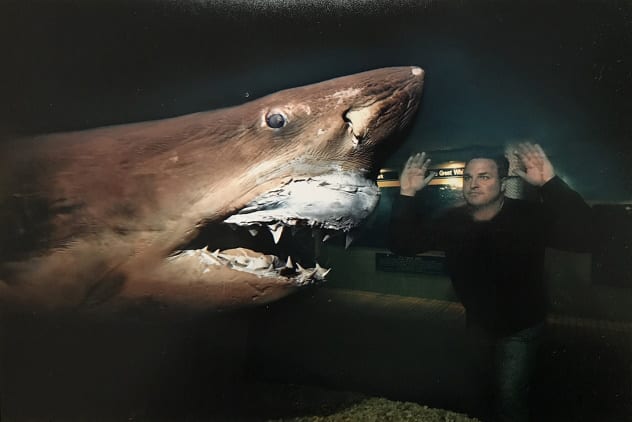
Rosie the Shark became a viral sensation when YouTuber and urban explorer Luke McPherson discovered her decaying remains in a large tank in 2018. The question many raised, however, was why was Rosie there, and who had forgotten about her?
Rosie was part of the Wildlife Wonderland in Bass, Victoria, Australia, a zoo and animal rehabilitation center for Australia’s native species, such as wombats, kangaroos, koalas, and various birds.
Unlike many of the other zoos and parks on this list, which were shut down for alleged animal cruelty, Wildlife Wonderland was shut down because they violated Wildlife Act 1975 and did not have a license to display native animals, meaning that they could not operate as a zoo, causing the owners to give away the animals and close down the park in 2012.[7]
As to how Rosie ended up in the abandoned zoo, an artist preserved her body after she was caught in a fishing net and donated her to the museum. In 2019, due to vandals causing damage to Rosie’s tank, the shark was finally moved to another establishment in Victoria called Crystal World.
3 Walt Disney World’s Discovery Island
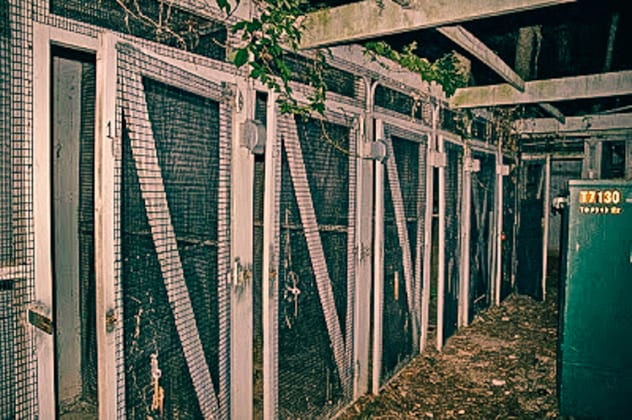
We discussed a failed park by Warner Brothers, but one might be surprised to find Disney on this list.
Discovery Island was a wildlife and nature attraction in Walt Disney World in Orlando, Florida, that included many native and exotic birds and vegetation, as well as a sandy beach for guests to walk on. It operated from April 1974 to April 1999.
Walt Disney scouted the island while buying the land that would become Disney World and had big plans for its 11.5 acres. First named Blackbeard’s Island, he wanted it to be a pirate-themed attraction, complete with shipwrecks, forts, and an inn, but as construction on the park began, he decided to make it more tropical, introducing exotic birds and plants to the island and renaming it Treasure Island.
As the years went on, the island became more focused on the animal wildlife. An aviary was built on the grounds that would breed exotic birds, and the island was once again renamed to Discovery Island.[8]
Controversy would hit Discovery Island in 1989, when a two-month investigation by state and federal officials led to charges being filed against Disney and five employees for firing rifles at hawks, beating vultures to death with sticks, and destroying nests and eggs. The state report indicated that many of the employees thought they were acting within Disney World’s permits and were carrying out the illegal activities under the direction of the park’s curator, Charlie Cook. Disney settled out of court.
After the bad publicity and with the opening of Animal Kingdom, Disney decided to close Discovery Island in April 1999, relocating the animals to the Animal Kingdom resort and letting the vegetation grow and take over the island.
In 2009, urban explorer Shane Perez and some friends swam, under the cover of darkness, to the island and took pictures of the abandoned buildings and overgrown greenery. They found leftover office paraphernalia and various specimens in jars. Though they did not press charges against the crew for trespassing, Disney did threaten to ban them from all of their parks.
Currently, there are no plans to rehabilitate Discovery Island, making it one of two abandoned parks at Disney World.
2 Southport Zoo
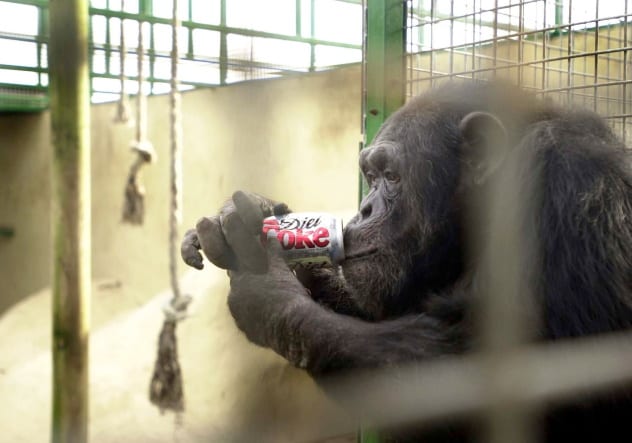
The official reason the Southport Zoo in Southport, Merseyside, England, was closed was because the city council did not allow the owners, Carol and Douglas Petrie, to renew their lease on the zoo, therefore allowing Pleasureland, a theme park attraction that abutted the zoo, to expand and create more attractions.
The more likely reason the city council didn’t renew the Petries’ lease was because they were tired of dealing with the protestors and picketers who opposed the zoo.
Though it was a smaller zoo, holding only 154 species, most of which were birds and invertebrates, the negative attention the zoo received was monumental, with it being listed as one of Britain’s worst zoos by the Captive Animals Protection Society (CAPS). Opposers to the zoo claimed they had recorded comments from hundreds of zoo visitors and former keepers that the animals suffered ill treatment, isolation, and understimulation.[9] The Petries denied these claims, and investigation of the zoo also found no evidence, bringing more scrutiny of how the government picks inspectors, as most of them have ties to the zoo industry.
At the forefront of the campaign against the zoo were chimpanzees Jackie and Jason, whose faces were plastered on pamphlets and posters to attract attention. It was stated that they lived in cramped, isolated cages with no interaction or enrichment. The animals were offered a home at a primate sanctuary in Dorset, but the Petries would not permit them being relocated, saying it was not in the chimps’ best interest.
The Petries would eventually lose their fight defending their zoo in 2004, and the animals would be rehomed to various zoos across England and Wales. The site was reopened in 2010 as “Battlefield Live Southport,” a venue for outdoor combat gaming using guns that fire infrared beams.
1 Nay Aug Park Zoo
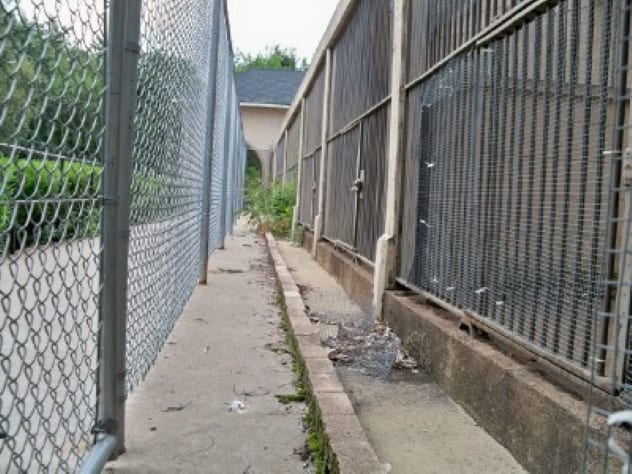
The Nay Aug Park Zoo in Scranton, Pennsylvania, was once a source of pride for the community, with children raising money to purchase elephants for the zoo in 1924 and 1935, but before the century’s close, it would be a source of scrutiny and disgrace.
Though the zoo once saw up to 500 visitors in a day, bad upkeep to the animal houses would cause people to question the establishment’s operations. In 1963, the heating system for the zoo would fail, causing four monkeys to die from exposure. The same year, a faulty door in the lion cages allowed a lioness to enter the cage of two cubs, resulting in their death. Other incidents throughout the years included a monkey escaping and biting a zoo attendant, an elephant choking on a stuffed toy that had been thrown into her cage and having to have it removed, and, at different times, an alligator, a monkey, and two black bears escaping from their cages, resulting in all being shot and killed. Parade magazine would call Nay Aug Park Zoo one of the ten worst zoos in the nation.
Citing financial struggles, the zoo closed in 1988, with Toni the elephant being the last animal to be relocated.[10] In 2003, the zoo would reopen as the Genesis Wildlife Center, but public outcry over animal abuse and the lack of changes to the structures would force the zoo to close again in 2009.
Though it no longer holds exotic animals, the main building of Nay Aug Zoo has been renovated and reopened by the charity Street Cats as a low-cost spay and neuter clinic for cats and dogs, with many cats living in the building while waiting to be adopted.
Tracy lives with her dog in a tourist town where she writes and creates.
Read more about zoos and the happenings within on 10 Bizarre Facts About Zoos and 10 Horrifying Zoo Accidents.
![10 Abandoned Amusement Parks With Horrific Histories [Disturbing] 10 Abandoned Amusement Parks With Horrific Histories [Disturbing]](https://listverse.com/wp-content/uploads/2019/09/gulliver-150x150.jpeg)
